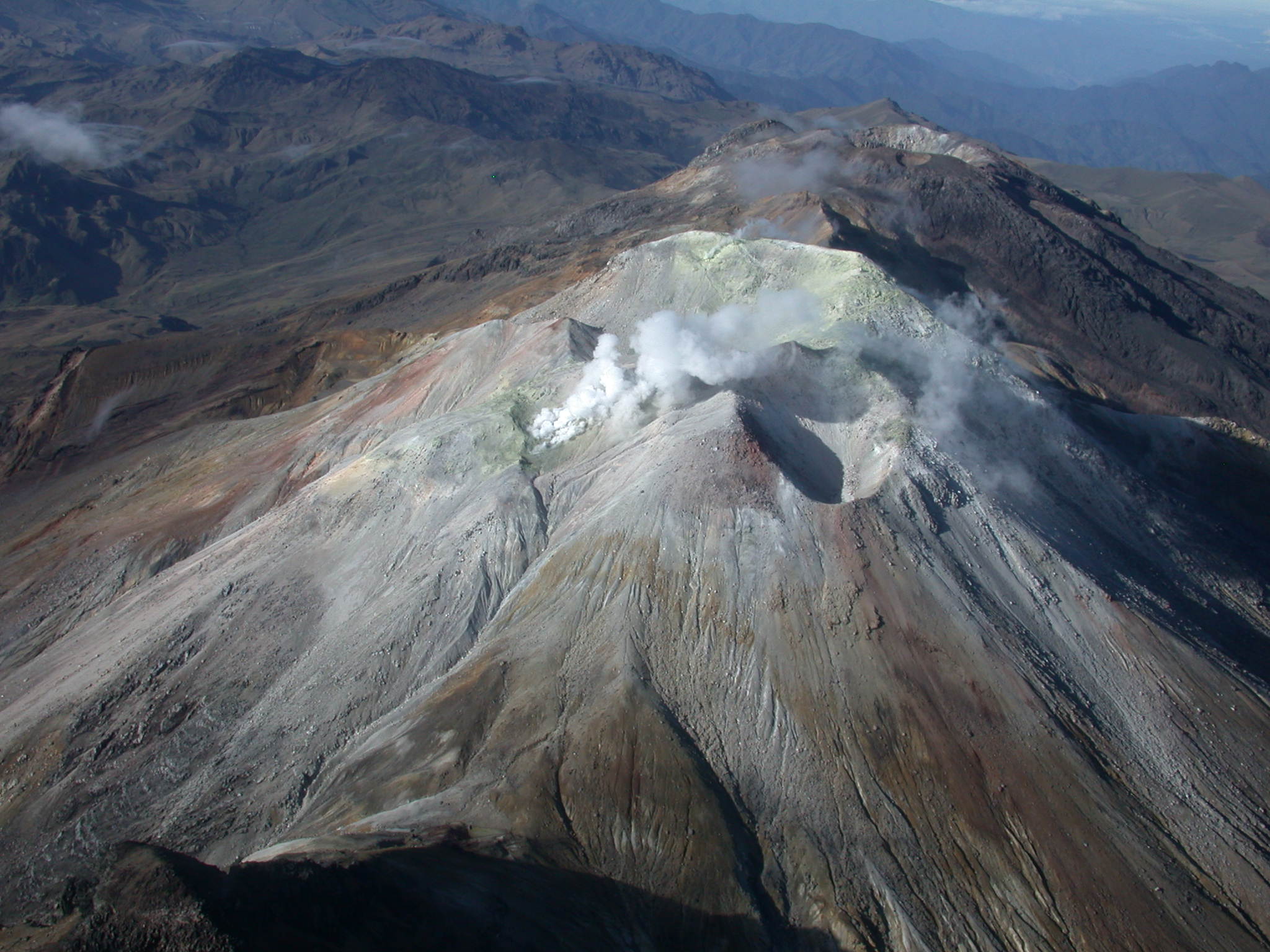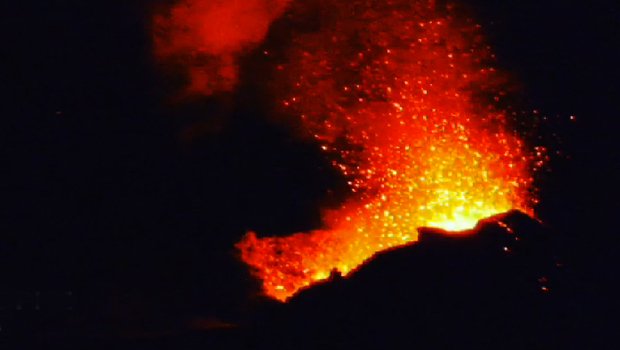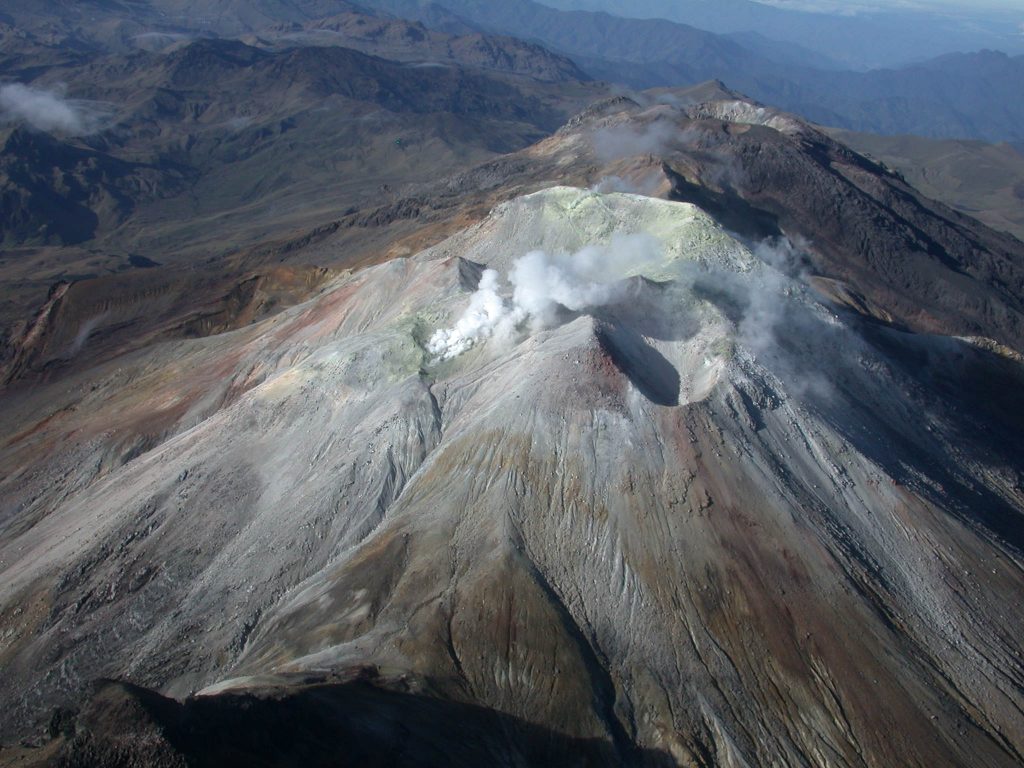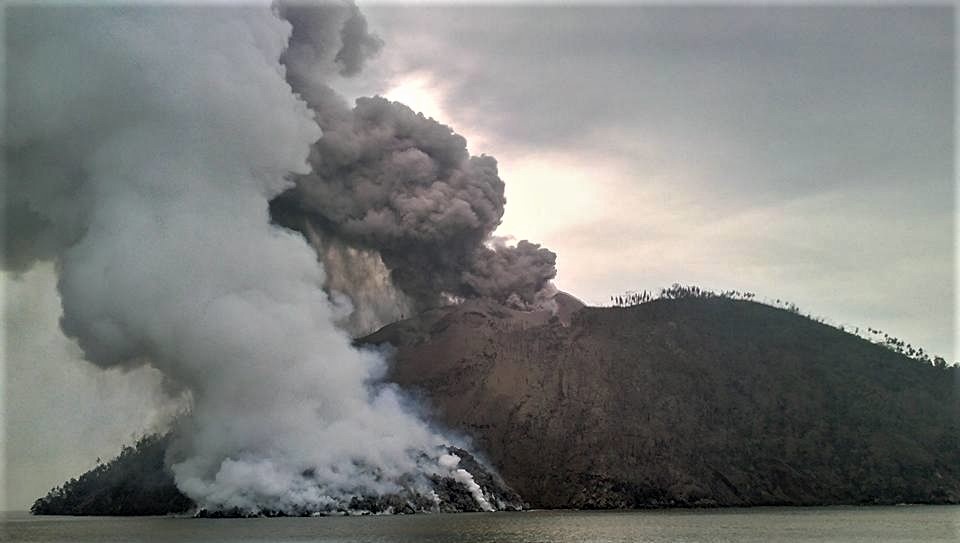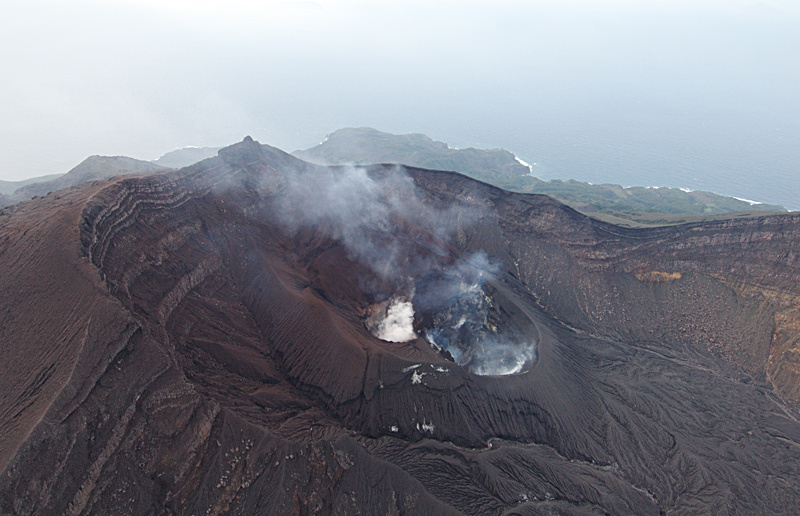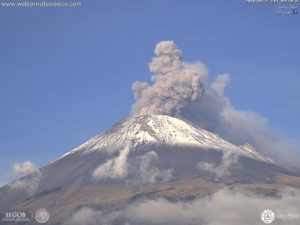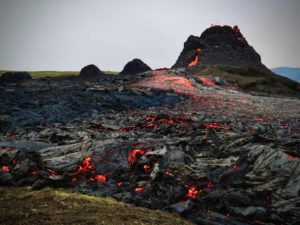February 28 , 2019 .
La Réunion , Piton de la Fournaise :
Activity bulletin from Wednesday, February 27, 2019 at 16:00 (local time).
The eruptive activity that resumed on February 19, 2019 at Piton de la Fournaise around 7:10 pm local time continues. Despite a significant increase observed over the last 24 hours, the intensity of the eruptive tremor (indicator of the intensity of the eruption) has dropped to a level close to that observed a week ago (Figure 1).
Figure 1: Evolution of the RSAM (indicator of the volcanic tremor and the intensity of the eruption) between 09h48 (05h48 UTC) on February 18th and February 27th at 15h42 (11h42 UTC) on the seismic station of FLR. (© OVPF / IPGP)
– Over the past 36 hours, 5 superficial superficial volcano-tectonic earthquakes (above sea level) have been recorded.
– After a deflation of the building related to the transfer of magma that occurred on February 18, 2019, the deformations of the summit area do not show any particular signals.
– The CO2 concentrations in the near-field soil (gîte du volcan area) remain high.
Alert level: Alert 2-2
Source : OVPF.
Photo : Christophe Georget / Linfo re
Colombia , Cumbal :
Weekly activity bulletin of the volcanic complex Cumbal
The level of activity of the volcano continues at the level: YELLOW LEVEL ■ (III): CHANGES IN THE BEHAVIOR OF THE VOLCANIC ACTIVITY.
Following the activity of the CUMBAL VOLCANIC COMPLEX, the COLOMBIAN GEOLOGICAL SERVICE (SGC) reports that:
Between 19 and 25 February 2019, the number of earthquakes increased from 169 earthquakes the previous week to 327 for this period, all with low energy levels and mainly associated with rock fracturing at the same time. inside the volcano. Some of the earthquakes were located near the La Plazuela crater, northeast of the volcanic complex, at distances up to 2 km, with surface depths and magnitudes less than 1.0 on the scale. Richter.
Favorable weather conditions led to the observation of gas columns mainly from the El Verde fumarolic field, located north-east of the volcanic complex. The emission columns were observed with varying white color, height and dispersion direction, changing under the action of the winds.
The COLOMBIAN GEOLOGICAL SERVICE is attentive to the evolution of the volcanic phenomenon and will continue to inform in a timely manner of the observed changes.
Source : SGC
Photo : SGC
Papua New Guinea , Kadovar :
3.608°S, 144.588°E
Elevation 365 m
Based on satellite data and wind model data, the Darwin VAAC reported that on 21 February an ash plume from Kadovar rose to an altitude of 1.8 km (6,000 ft) a.s.l. and drifted ESE.
The 2-km-wide island of Kadovar is the emergent summit of a Bismarck Sea stratovolcano of Holocene age. Kadovar is part of the Schouten Islands, and lies off the coast of New Guinea, about 25 km N of the mouth of the Sepik River. The village of Gewai is perched on the crater rim. A 365-m-high lava dome forming the high point of the andesitic volcano fills an arcuate landslide scarp that is open to the south, and submarine debris-avalanche deposits occur in that direction. Thick lava flows with columnar jointing forms low cliffs along the coast. The youthful island lacks fringing or offshore reefs. No certain historical eruptions are known; the latest activity was a period of heightened thermal phenomena in 1976.
Source:Darwin Volcanic Ash Advisory Centre (VAAC) , GVP.
Photo : Beth Acknonero
Hawaii , Kilauea :
19°25’16 » N 155°17’13 » W,
Summit Elevation 4091 ft (1247 m)
Current Volcano Alert Level: ADVISORY
Current Aviation Color Code: YELLOW
Activity Summary:
Kīlauea Volcano is not erupting. Rates of seismicity, deformation, and gas emissions have not changed significantly over the past week.
Observations:
Geophysical and geologic data indicate no significant change with volcanic activity. Low rates of seismicity continue across the volcano, with earthquakes occurring primarily in the summit and south flank regions. GPS stations and tiltmeters continue to show motions consistent with refilling of the deep East Rift Zone magma reservoir. Sulfur dioxide emission rates from the summit and from Puʻu ʻŌʻō remain low. These rates have been steady over the past several weeks.
A group of homes remains isolated by lava from last summer’s eruption. Gases rise from the line of fissures adjacent to them.
Hazards remain in the lower East Rift Zone eruption area and at the Kīlauea summit. Residents and visitors near recently active fissures and lava flows should heed Hawaii County Civil Defense and National Park warnings and be prepared, if necessary, to self-evacuate in the unlikely event of renewed activity. Please note that Hawaii County maintains a closure of the entire lava flow field and eruptive vents, prohibiting access unless authorized through Civil Defense.
The Hawaiian Volcano Observatory (HVO) continues to closely monitor Kīlauea’s seismicity, deformation, and gas emissions for any sign of increased activity. HVO maintains visual surveillance of the volcano with web cameras and occasional field visits. HVO will continue to issue a weekly update (every Tuesday) and additional messages as warranted by changing activity.
Source : HVO
Photo : Bruce Omori
Japan : Suwanosejima :
29.638°N, 129.714°E
Elevation 796 m
JMA reported that crater incandescence at Suwanosejima’s Ontake Crater was visible at night during 15-22 February. Small events were occasionally recorded, generating plumes that rose as high as 900 m above the crater rim. The Alert Level remained at 2 (on a 5-level scale).
The 8-km-long, spindle-shaped island of Suwanosejima in the northern Ryukyu Islands consists of an andesitic stratovolcano with two historically active summit craters. The summit of the volcano is truncated by a large breached crater extending to the sea on the east flank that was formed by edifice collapse. Suwanosejima, one of Japan’s most frequently active volcanoes, was in a state of intermittent strombolian activity from Otake, the NE summit crater, that began in 1949 and lasted until 1996, after which periods of inactivity lengthened. The largest historical eruption took place in 1813-14, when thick scoria deposits blanketed residential areas, and the SW crater produced two lava flows that reached the western coast. At the end of the eruption the summit of Otake collapsed forming a large debris avalanche and creating the horseshoe-shaped Sakuchi caldera, which extends to the eastern coast. The island remained uninhabited for about 70 years after the 1813-1814 eruption. Lava flows reached the eastern coast of the island in 1884. Only about 50 people live on the island.
Source:Japan Meteorological Agency (JMA)
Photo : Auteur Inconnu.

